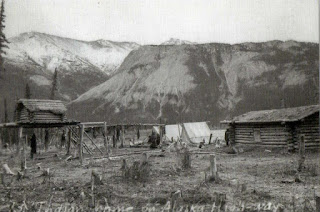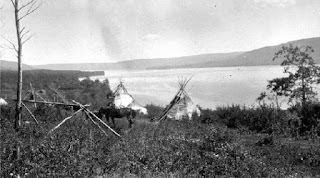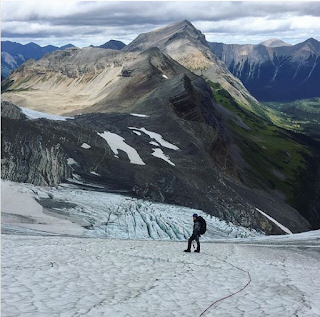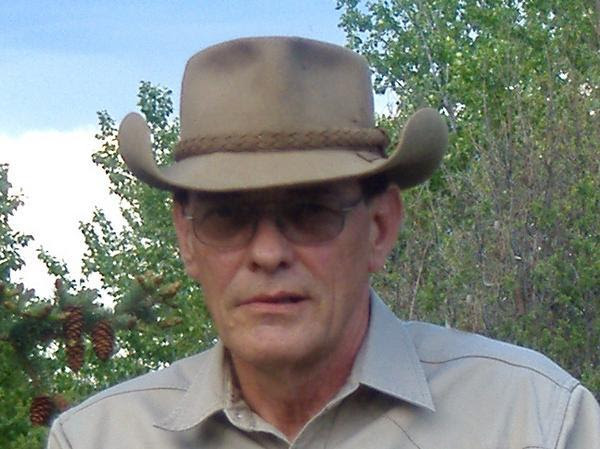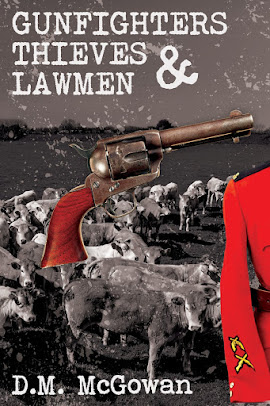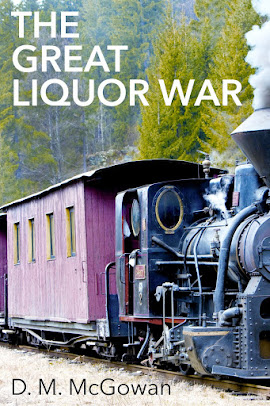Securing Supplies or “Possibles”
I posted something similar to this back in September of 2014
Today we call them necessary supplies.
Soldiers might call them “rations”. More than just food, “possibles” would also
include needles, thread, first aid supplies, perhaps extra ammunition or a
knife. In the early days of the mountain man they were “possibles” because
there was a good possibility you would need them to survive and if you didn’t
have any there was a good possibility you wouldn’t --- survive that is.
Some time ago an agent, commenting on
one of my stories, wrote that he had “never heard of a log cabin built high in
the trees.” He was commenting on a stores cache I had described. I couldn’t
believe that anyone who had read historical fiction, history, or any story
depicting mountain men and homesteaders had not heard of a permanent storage
cache or understood a description of same.
But then, once I had given it some
thought I realized that there are very few such structures described in either
fiction or non-fiction. Any pictures of such that I now hold in my imagination
are not from description but from an actual structure I’ve seen; perhaps a half
dozen of them.
I
also had trouble finding pictures of one. There is a copy of one displayed at
the Walter Wright Pioneer Village in Dawson Creek and although it is only on
posts about 4 feet high it does present
the idea quiet well. I should have taken a picture of it this summer. Here is a
period picture I did find:
Charlie MacDonald’s cabin near Toad
River
Without a method of storing supplies
in the wilderness and particularly in mountainous country those supplies will
not last long. Wolves, bears, wolverines, lynx, and many other animals eat and
enjoy the same items humans eat. If efforts are not made to keep those items
away from wildlife then the human will not have the supplies he thought he had.
And
sometimes even the best of efforts fail.
There are several descriptions of
temporary caches such as one Lloyd Cushway describes in one of his stories. He
has several collections of short stories, “Trail Smoke” being one but I think
this particular story appears in “Crosswind to the Fire.”
Lloyd and a partner had heard of a
mineral find in the upper reaches of the Cameron River North-East British Columbia . Since they had some experience
with the area they decided that they would attempt to stake claims before the
“big outfits” (primarily Gulf Minerals) could take it all. They put together
supplies for two weeks and flew up near the area. They landed and with each
carrying a heavy pack, hiked for an hour to a good camp.
Piper Cub
The partner had to hike back to the
plane and fly out to a meeting in Ft. St. John
When the partner had left Lloyd threw
a length of rope over the suspended pole. He tied one end of the rope to the
extra pack and hauled it high then tied off the other end of the rope to one of
the supporting trees. This is a temporary method of creating a cache safe from
marauders that has been used by thousands if not millions --- and several times
by Lloyd.
A week later, having staked several
claims in the pouring rain and crossing a rain-swollen river Lloyd discovered
that his oft used method for a temporary cache had this time failed. In his
hurry he had forgotten to wash his hands after creating lunch and the rope he
had used was therefore covered with bacon grease. Perhaps not enough to be
noticed by a human but Mr. Black Bear found it very tasty. After chewing on the
tasty rope for a while the rope broke and Mr. Bear --- perhaps became a convert
to the Jewish faith for like those who followed Moses he suddenly found himself
gifted with manna from heaven; a bag full of all manner of tasty treats.
Black Bear near Tumbler Ridge
When Lloyd returned to his cache there
was nothing left to make a meal. What had not been eaten by Mr. Bear had been
destroyed.
The native population of North America had several methods for creating
caches but didn’t have the same problem as the solitary mountain man. A village
by its very existence serves to keep foraging wildlife at bay although stories
of unwelcome visitors during particularly rough periods do exist.
Beaver (Dane-zaa ) family near Peace River town 1911
another Dane-zaa camp on the west end of Moberly Lake
At the east end of the lake is a corridor used by Grizzly traveling north and south.
The lone trapper or the small holding,
whether miner, farmer or trapper did not however have sufficient numbers to
scare away wolves, bears, coyotes or wild cats. Therefore, if the human in
question intends to remain in one place for any length of time it is worth his
while to build a permanent cache that can be used year after year and will
protect supplies and, in the case of the trapper, the product of his efforts,
the pelts.
Ursus arctos
horribilis
Of course there are certain limitation
in almost anything. For example, in the case of Ursus
arctos horribilis better
known as the Grizzly bear they go anywhere and eat anything they want. If your
cache is high enough that he can’t tell where that marvelous smell is coming
from perhaps he’ll wander off and attack an ant hill. If your cabin is strong
enough and the marvelous smells not strong enough to drive him into a frenzy perhaps he’ll tear up some roots down
by the lake. If your cabin or cache is in an area he or she fequents and tempts
to destroy, perhaps a move is in order.
That’s a move on your part. Mrs.
Grizzly will not be moving.
Ursus arctos
horribilis
Permanent caches or storage houses
were and are built in the trees sometimes as high as fifteen feet. Such a
height may not be necessary in summer but may not be enough once there is
several feet of snow on the ground. It will appear, should you happen to look
up and notice it blending in with the trees, to be a small log cabin
tree-house. It will not have any windows and the door will be very strong. On
the end where that door is there is a good possibility that the floor will
extend beyond the front of the building forming a “porch” to offer a place to
load and unload supplies. The roof may be of several materials such as shakes
split from local trees, a tarpauline changed every few years or even some
material hauled in from “outside”. Access is likely to be via the ladder
leaning against the main cabin, but there may be a rope ladder attached to the
“porch” or a few cross-pieces attached to one of the supporting trees.
By the way, Lloyd did make it out to
civilization and food. He was exhausted, wet, cold, and tired. He had pushed himself
in many ways he should have known to avoid, but he made it to a ranch and then
back to town. I see one of his collection of stories on Amazon and others can
be found at Bill’s News, 250-782-2933. There are also many great treasures at
the Dawson Creek Art Gallery, 250-782-2601.
Another one of the places where you
can find my novels but you can also click on the book covers to the right or go
to Amazon.com/books where you can "look inside the book."
